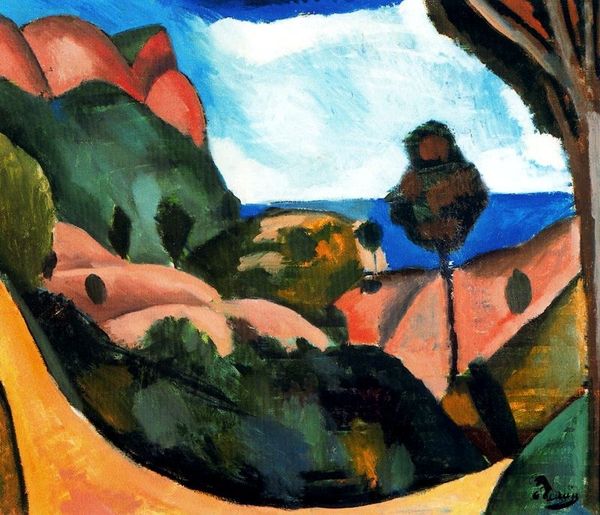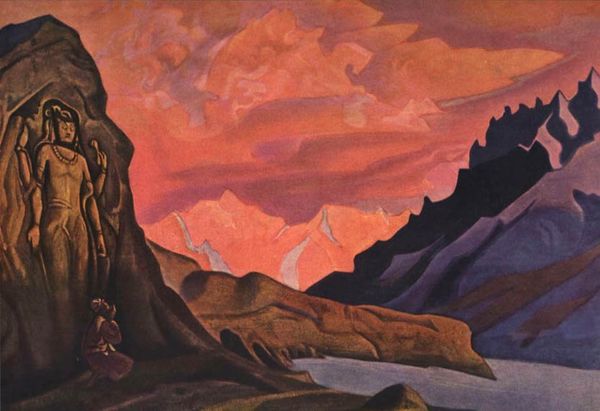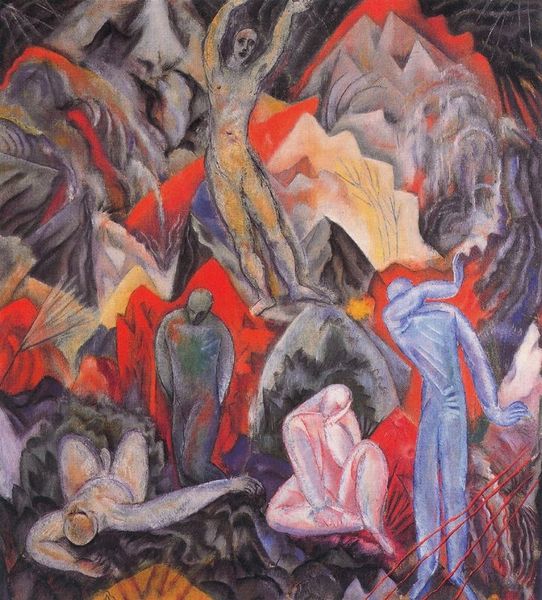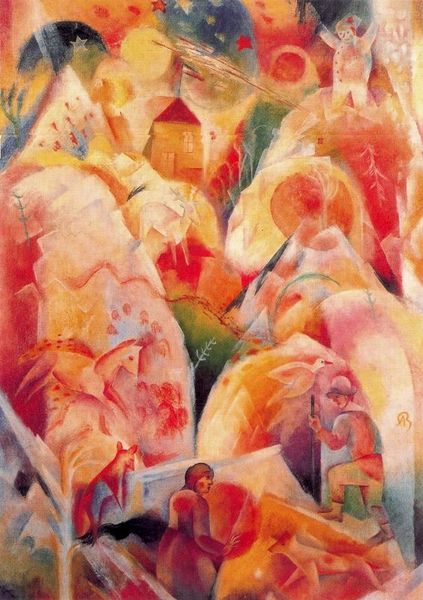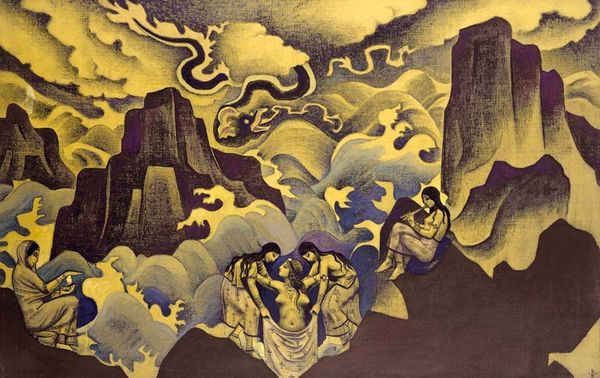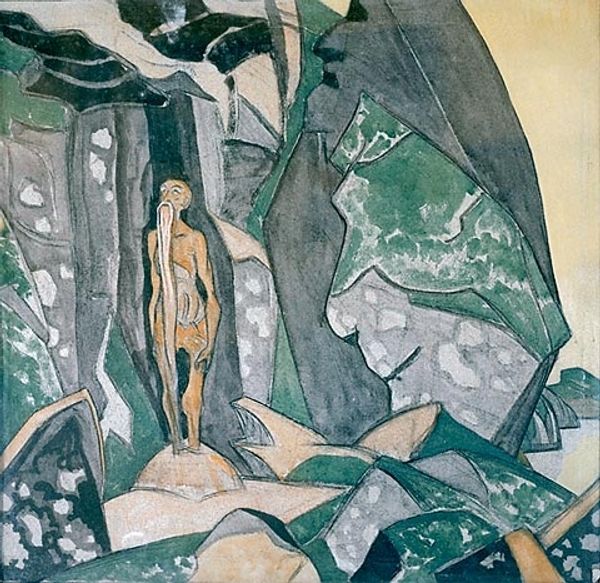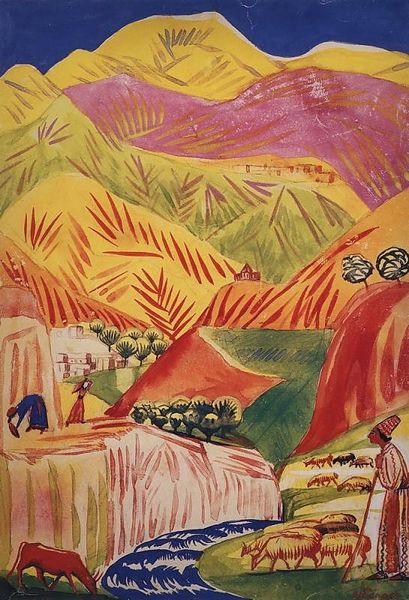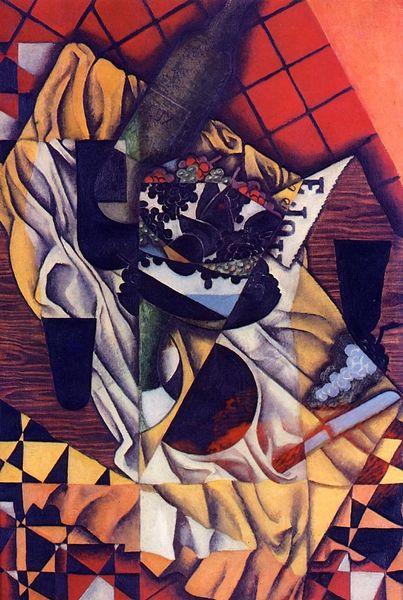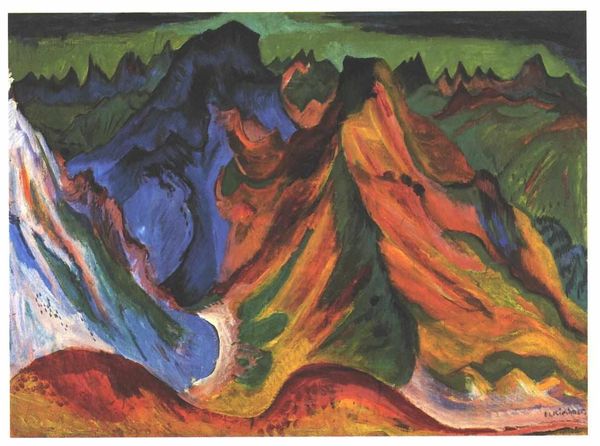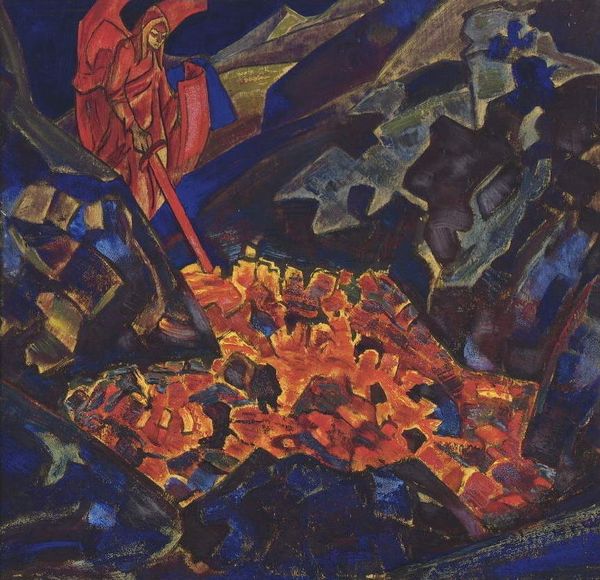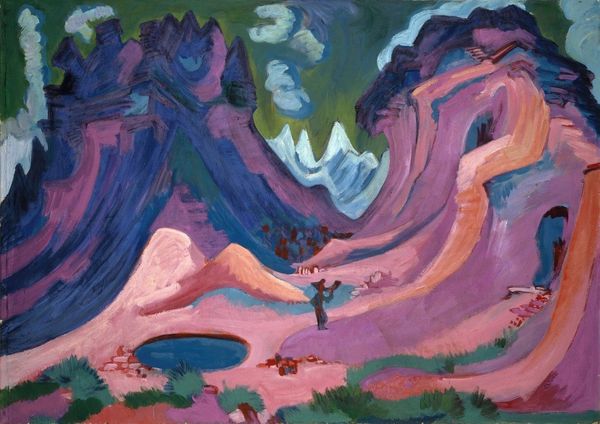
painting, oil-paint, textile
#
painting
#
oil-paint
#
textile
#
oil painting
#
geometric
#
expressionism
#
abstraction
#
modernism
#
expressionist
Dimensions: 115 x 125 cm
Copyright: Public domain US
Curator: Upon first glance, the dynamic movement and heightened emotion in Frantisek Kupka’s “Creation” are arresting. What is your first impression? Editor: Visually, I'm struck by the colour palette. The raw reds contrast against a white backdrop with streaks of blue that seems to emanate both light and cold. It’s restless. I’d even say aggressive in places, as the oil paint is also applied directly onto the canvas texture which adds further disruption. Curator: Indeed. Kupka painted this piece circa 1920, amid social and political upheaval in Europe. "Creation" is, after all, not just about aesthetics, but about the power dynamics embedded in the historical contexts shaping identity. What narratives do you read here? Is there perhaps, even a commentary on labour conditions and class structure embedded in its abstraction? Editor: While I appreciate the broader social context, I am more intrigued by Kupka’s formal choices. The application of the colours creates angular tension as some edges bleed, and the movement this engenders, is restless. Curator: I agree with the movement aspect. Kupka's deployment of Expressionism speaks to the deep-seated desire to capture both societal upheaval as well as his own subjectivity as it exists in the social world. Consider the feminist perspectives of the era that challenged notions of art, creativity and authorship in response to political systems. Editor: Perhaps, but, let us remember that the geometric forms disrupt any singular, linear narrative of experience. They serve as a reminder of the limitations inherent in reductive interpretation and a deeper connection to modernism as a whole. Curator: The tension between abstraction and figuration can be further viewed through the lens of political liberation from social conditions prevalent in Kupka's time, perhaps this could be said to reflect not just a style choice, but rather speaks to gender and race. The white dominating shade perhaps can symbolize power, but maybe more to Kupka’s commentary of freedom. Editor: Undoubtedly, "Creation" pushes us beyond the literal—prompting consideration for modernity's complexities as it unfolds on the canvas. Thank you. Curator: Yes, the multilayered narrative challenges and rewards. The abstraction invites multiple points of entry, thus offering no easy answers, only thoughtful reflection of the artwork.
Comments
No comments
Be the first to comment and join the conversation on the ultimate creative platform.


